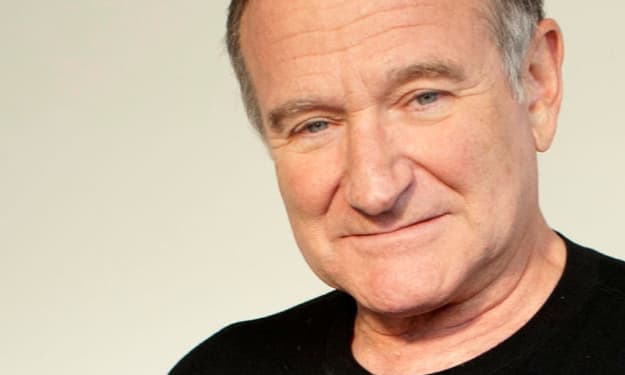The Evolution of Superhero Movies: From Comics to Blockbusters
Written by A.I

### Introduction
Superhero movies have evolved from niche adaptations of comic books into a dominant force in global cinema. This transformation spans several decades and involves technological advancements, changes in storytelling, and shifts in audience expectations. What began as a modest genre has become a cultural phenomenon, generating billions in revenue and capturing the imaginations of audiences worldwide.
### Early Beginnings
The roots of superhero movies can be traced back to the early 20th century, with comic books emerging as a popular medium in the 1930s. Characters like Superman and Batman quickly became cultural icons, laying the groundwork for future film adaptations. The first major attempt to bring these characters to the screen came with the serial films of the 1940s, such as "Adventures of Captain Marvel" (1941) and "Batman" (1943). These serials were low-budget productions but played a crucial role in introducing superheroes to a broader audience.
### The Silver Age and Television
The 1960s marked the Silver Age of comic books, characterized by a revival of superhero stories and the introduction of new characters. This era also saw the transition of superheroes to television. The "Batman" TV series (1966-1968), starring Adam West, became a cultural phenomenon with its campy style and memorable catchphrases. Although it wasn't a movie, its success demonstrated the potential for superhero stories to thrive in visual media.
### The Breakthrough: Superman and Batman
The late 1970s and 1980s brought significant breakthroughs in superhero cinema. Richard Donner's "Superman: The Movie" (1978) was a landmark film, combining impressive special effects with a compelling narrative. Starring Christopher Reeve, the film set a new standard for the genre and proved that superhero movies could be both critically and commercially successful.
Tim Burton's "Batman" (1989) further cemented the genre's appeal. With its dark, gothic aesthetic and Michael Keaton's portrayal of the Caped Crusader, "Batman" was a stark contrast to the campy TV series. It was a box office hit and demonstrated the potential for superhero movies to appeal to adult audiences.
### The 1990s: A Period of Transition
The 1990s were a transitional period for superhero movies. While some films like "Batman Returns" (1992) and "Blade" (1998) achieved success, many others struggled. Films such as "Batman & Robin" (1997) were critically panned, leading to a temporary decline in the genre's popularity. However, the groundwork was being laid for a resurgence, with advancements in CGI technology and a growing interest in more complex, character-driven stories.
### The Modern Era: The Rise of the MCU and DCEU
The 2000s marked the beginning of a new era for superhero movies. Bryan Singer's "X-Men" (2000) and Sam Raimi's "Spider-Man" (2002) were both critical and commercial successes, demonstrating that superhero films could blend action, drama, and special effects to great effect. These films paved the way for the rise of the Marvel Cinematic Universe (MCU).
The MCU, launched with "Iron Man" in 2008, revolutionized the genre by creating an interconnected universe of films. Spearheaded by producer Kevin Feige, the MCU introduced a new model for storytelling, with individual films contributing to a larger narrative arc. This approach culminated in the unprecedented success of "The Avengers" (2012), which brought together characters from multiple films in a single blockbuster event.
The DC Extended Universe (DCEU) followed suit, beginning with "Man of Steel" (2013). While the DCEU faced more critical challenges compared to the MCU, it produced significant hits like "Wonder Woman" (2017) and "Aquaman" (2018), further solidifying the genre's appeal.
### Technological Advancements
Advancements in technology have been pivotal in the evolution of superhero movies. The use of CGI has enabled filmmakers to bring comic book visuals to life with unprecedented realism. Films like "The Avengers" and "Guardians of the Galaxy" showcase stunning visual effects that were unimaginable in earlier decades. These technological strides have expanded the scope of storytelling, allowing for more ambitious and visually spectacular films.
### Diverse Storytelling and Representation
One of the most significant developments in recent years has been the diversification of superhero stories. Films like "Black Panther" (2018) and "Captain Marvel" (2019) have broken new ground in terms of representation, highlighting the importance of diverse voices in the genre. "Black Panther," in particular, was a cultural milestone, resonating with audiences worldwide and demonstrating the power of superhero stories to address broader social issues.
### Conclusion
The evolution of superhero movies from their comic book origins to blockbuster juggernauts is a testament to the genre's adaptability and enduring appeal. What began as simple, serialized adventures has transformed into a multi-billion-dollar industry that continues to push the boundaries of filmmaking. As technology advances and storytelling evolves, superhero movies will undoubtedly continue to captivate audiences and shape the landscape of modern cinema.
About the Creator
Enjoyed the story? Support the Creator.
Subscribe for free to receive all their stories in your feed.





Comments
There are no comments for this story
Be the first to respond and start the conversation.